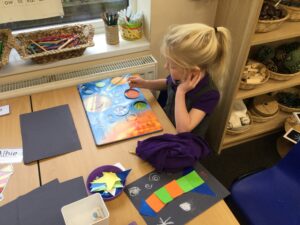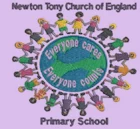
At Newton Tony primary school, we believe that one of the greatest skills that we can teach a child is how to read fluently and for enjoyment, opening a world of endless learning possibilities and academic success. We understand that if children have a positive start with early reading and phonics it will have endless benefits across all areas of learning. When children learn to read at an early age, they have greater general knowledge, expand their vocabulary, become more fluent readers, develop problem solving skills, grow in self-confidence and flourish with creativity and their imagination.

How do we teach early reading?
We teach early reading through the phonics programme ‘Little Wandle Letters and Sounds Revised’, an accredited, systematic and synthetic phonics programme.https://www.littlewandlelettersandsounds.org.uk/. Watch this short video that our Hedgehog class teacher, Mrs Jordan, has recorded to gain a deeper understanding.
https://www.youtube.com/watch?v=MhrZ1DFZmfA
Find our full Reception and Year 1 phonics teaching programme overview here to see what your child will learn and when.
Watch more videos in the link below to help your child say the sounds
The resources below will help you support your child with saying their sounds and writing their letters. There are also some useful videos so you can see how they are taught at school and feel confident about supporting their reading at home.
https://www.littlewandlelettersandsounds.org.uk/resources/for-parents/
When do we start teach phonics?
We start teaching phonics in Reception Year (EYFS) and follow the Little Wandle Letters and Sounds Revised progression, which ensures children build on their growing knowledge of the alphabetic code, mastering phonics to read and spell as they move through school.
Daily phonics lessons in Reception and Year 1
We teach phonics for 30 minutes a day. In Reception, we build from 10-minute lessons, with additional daily oral blending games, to the full-length lesson as quickly as possible. Each Friday, we review the week’s teaching to help children become fluent readers. Children make a strong start in Reception: teaching begins in Week 2 of the Autumn term. · We follow the Little Wandle Letters and Sounds Revised expectations of progress:
Children in Reception are taught to read and spell words using Phase 2 and 3 GPCs, and words with adjacent consonants (Phase 4) with fluency and accuracy.
Children in Year 1 review Phase 3 and 4 and are taught to read and spell words using Phase 5 GPCs with fluency and accuracy.
Children entering Year 2 will start Phase 6 which develops a variety of spelling strategies including word specific spellings e.g. see/ sea, spelling of words with prefixes and suffixes, doubling and dropping letters where necessary. Also the accurate spelling of words containing unusual GPC’
Daily Keep-up lessons ensure every child learns to read
Any child who needs additional practice has daily Keep-up support, taught by a fully trained adult. Keep-up lessons match the structure of class teaching, and use the same procedures, resources and mantras, but in smaller steps with more repetition, so that every child secures their learning. We timetable daily phonics lessons for any child in Year 2 who is not fully fluent at reading or has not passed the Phonics Screening Check. These children need to catch up, so the gap between themselves and their peers does not widen. We use the Little Wandle Letters and Sounds Revised assessments to identify the gaps in their phonic knowledge and teach to these using the Keep-up resources – at pace
Teaching reading: Reading practice sessions three times a week
We teach children to read through reading practice sessions three times a week. These are taught by a fully trained adult to small groups of approximately six children. Books are matched to the children’s secure phonic knowledge using the Little Wandle Letters and Sounds Revised assessments and book matching grids. Progress is monitored by the class teacher, who rotates and works with each group on a regular basis. Each reading practice session has a clear focus, so that the demands of the session do not overload the children’s working memory. The reading practice sessions have been designed to focus on three key reading skills:
o decoding
o prosody: teaching children to read with understanding and expression
o comprehension: teaching children to understand the text.
Supporting your child with reading
Although your child will be taught to read at school, you can have a huge impact on their reading journey by continuing their practice at home. There are two types of reading book that your child may bring home: A reading practice book. This will be at the correct phonic stage for your child. They should be able to read this fluently and independently. A sharing book. Your child will not be able to read this on their own. This book is for you both to read and enjoy together.
Reading practice book
This book has been carefully matched to your child’s current reading level. If your child is reading it with little help, please don’t worry that it’s too easy – your child needs to develop fluency and confidence in reading. Listen to them read the book. Remember to give them lots of praise – celebrate their success! If they can’t read a word, read it to them. After they have finished, talk about the book together.
Sharing book
In order to encourage your child to become a lifelong reader, it is important that they learn to read for pleasure. The sharing book is a book they have chosen for you to enjoy together. Please remember that you shouldn’t expect your child to read this alone. Read it to or with them. Discuss the pictures, enjoy the story, predict what might happen next, use different voices for the characters, explore the facts in a non-fiction book. The main thing is that you have fun!
The Phonics Screening Check
The National Phonics Screening Check is in the month of June when children are in Year 1. The purpose of the screening check is to confirm that all children have learned phonic decoding to an age-appropriate standard. The children who did not meet the required standard for the check in year 1 enter again in year 2 with additional support. Children have to read 40 words to check they can decode and blend to read Phonics Screening Check information
Click on the links below for more information
